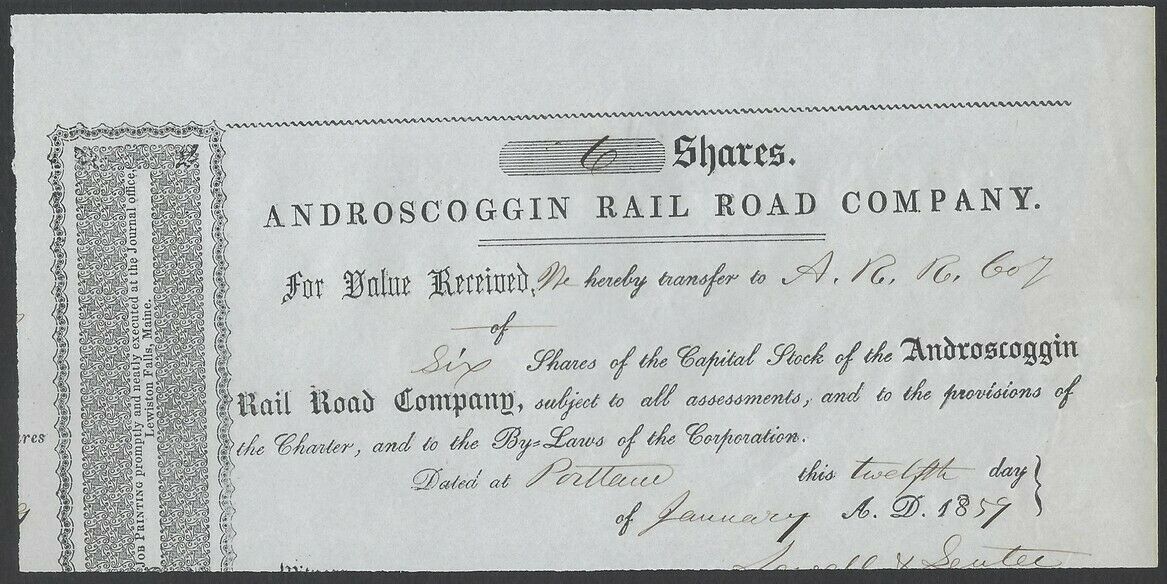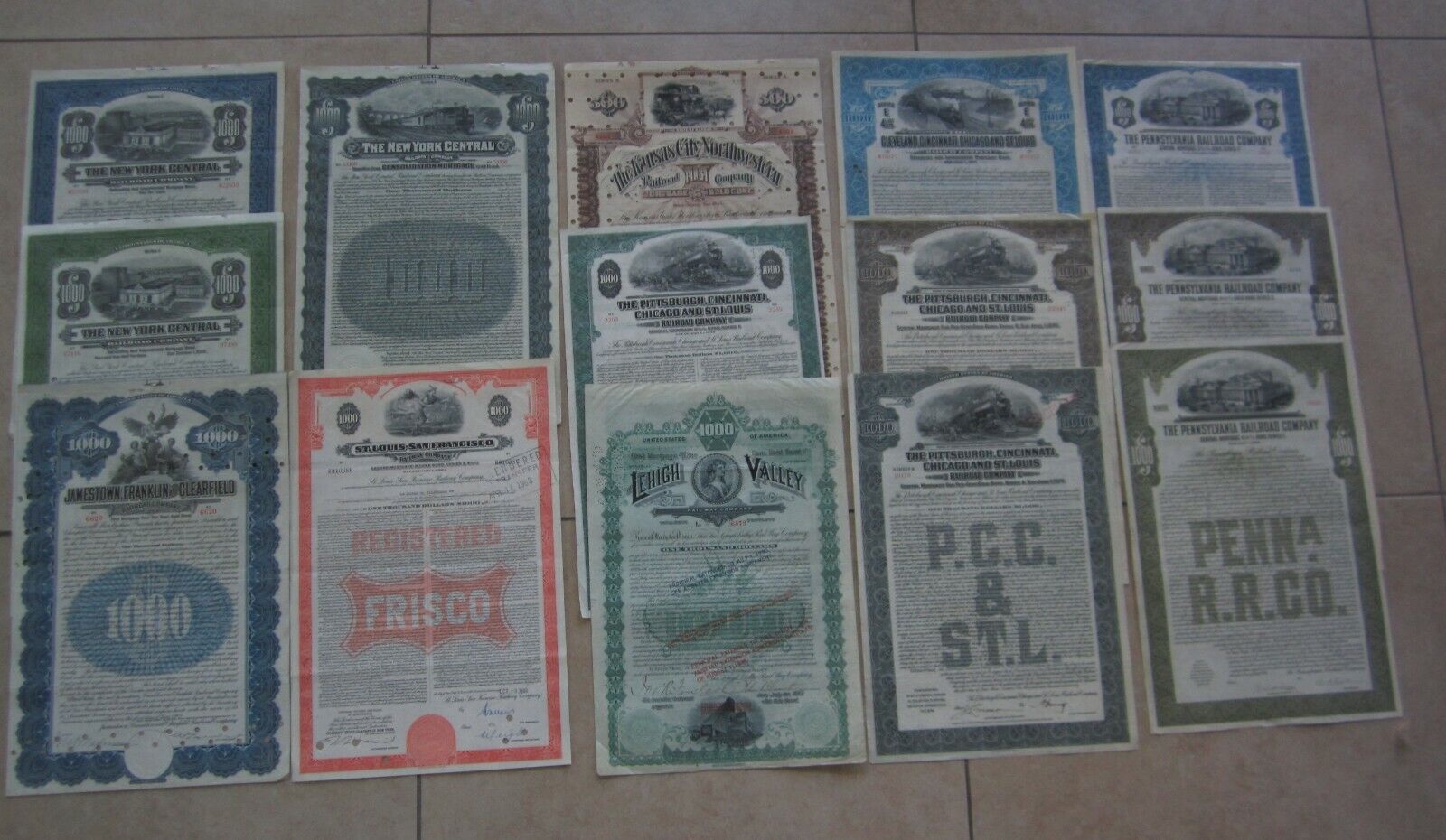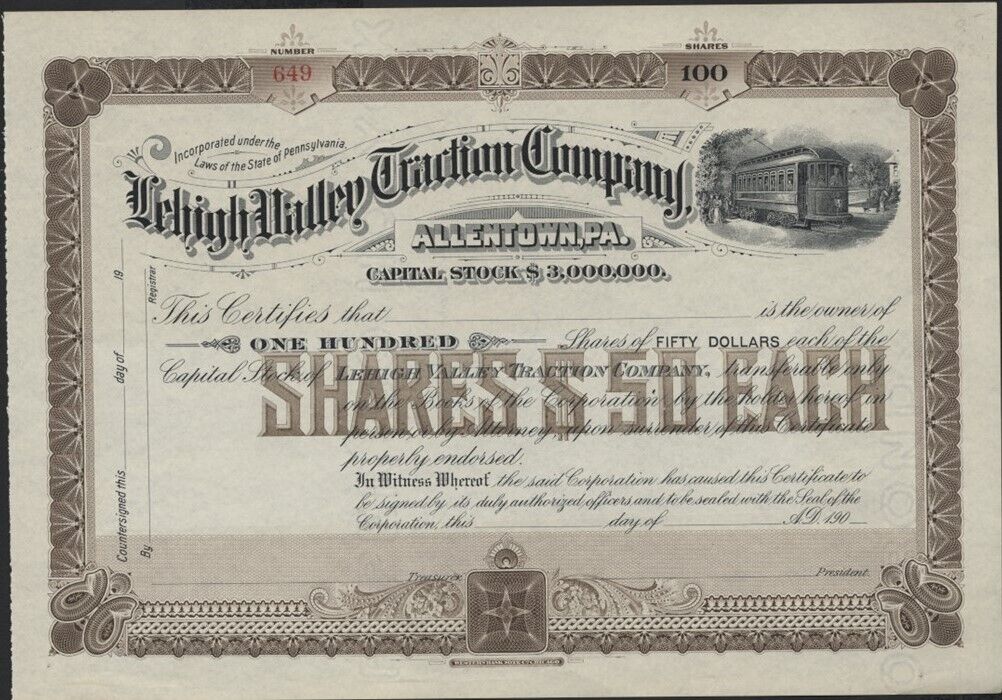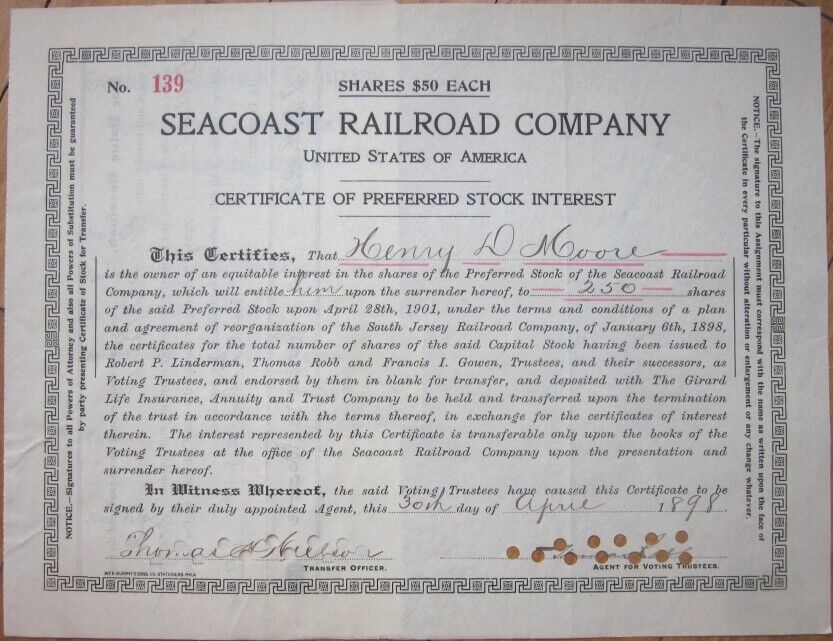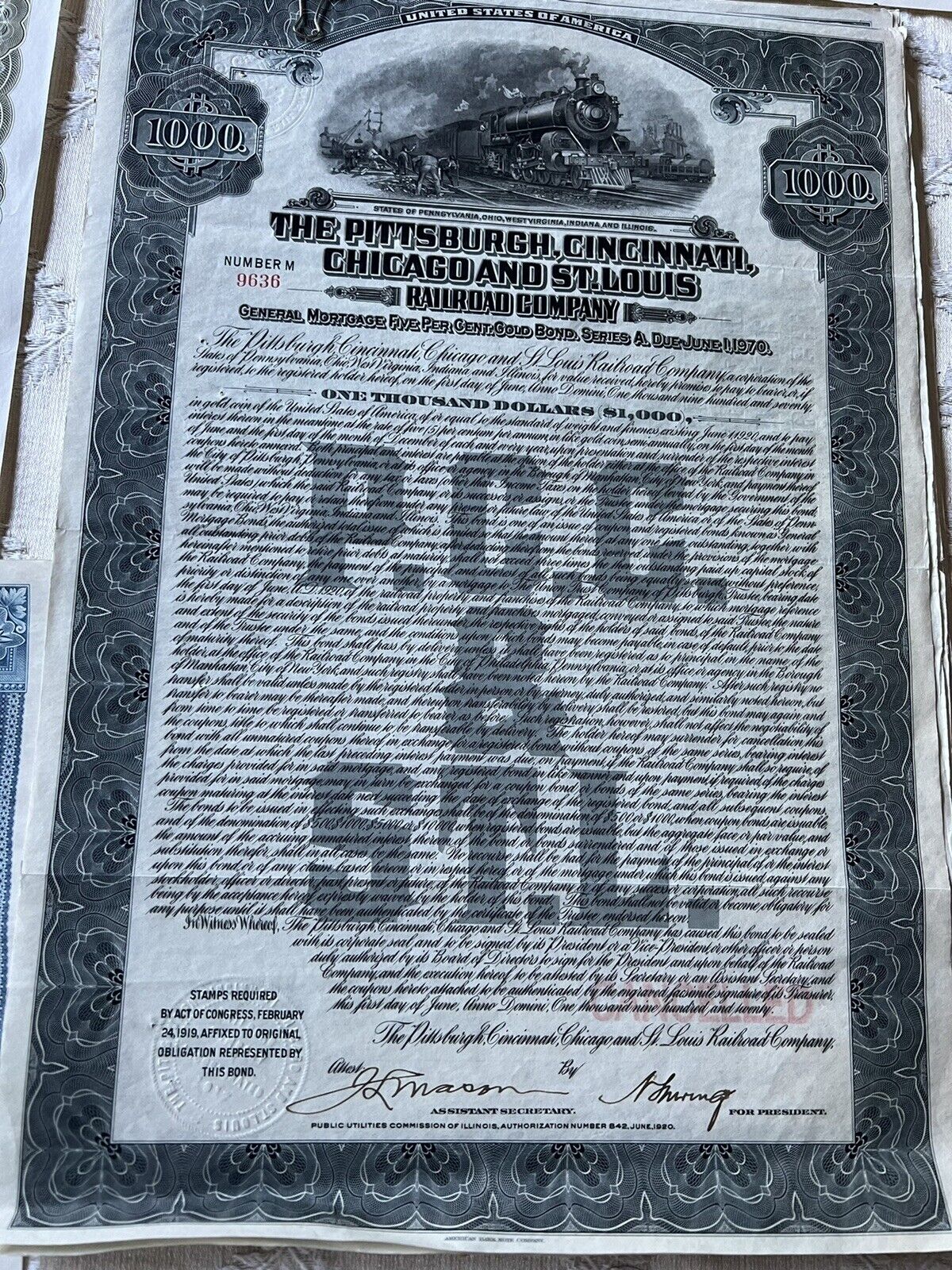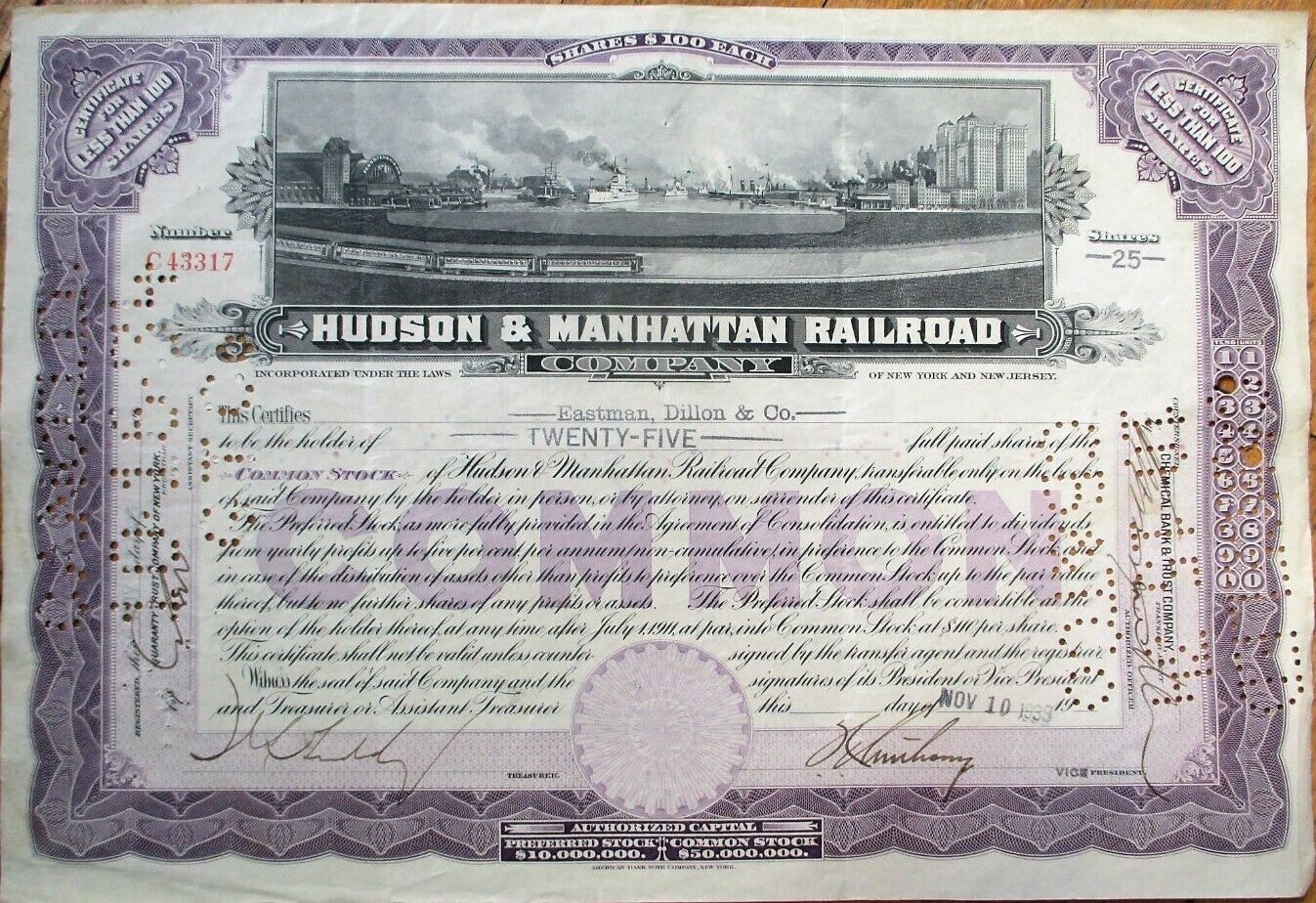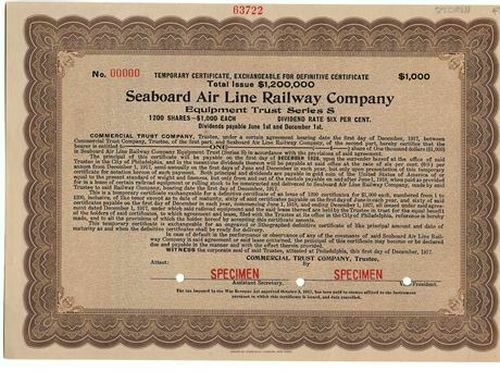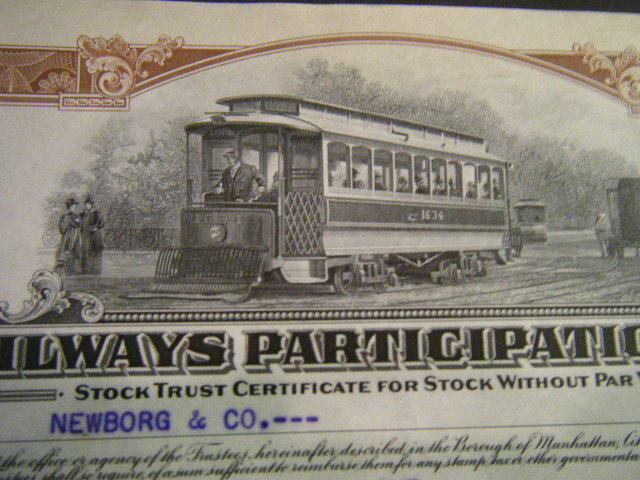-40%
Maine Central Railroad Company Stock Certificate
$ 7.91
- Description
- Size Guide
Description
Product DetailsBeautifully engraved antique stock certificate from the Maine Central Railroad Company dating back to the 1920's and 1940's. This document, which is signed by two company officers, was printed by the American Bank Note Company and measures approximately 11 3/4" (w) by 8" (h).
This certificate features great vignette of a pair of trains passing a group of track workers.
Images
You will receive the exact certificate pictured.
Historical Context
The Maine Central Railroad was a railroad in central and southern Maine. It was chartered in 1856 and began operations in 1862. It operated between South Portland, Maine, east to the Canada-U.S. border with New Brunswick, west to Vermont and north to Quebec.
Charter & Creation
The Maine Central was created initially through the merger of the Androscoggin and Kennebec Railroad and the Penobscot and Kennebec Railroad, resulting in a line from Danville (northeast of Portland) to Bangor. The line connected with the Grand Trunk Railway on its Portland-Chicago mainline at Danville and with the Bangor and Piscataquis Railroad in Bangor. As a result of its connection with the Grand Trunk, the Maine Central was initially running with a track gauge of 5 ft 6 in known as "Portland" gauge.
Expansion
The Maine Central purchased the Portland and Kennebec Railroad, which ran from Portland to Danville and was built to standard track gauge, since it connected with the Boston and Maine Railroad at Portland. By 1871, the Maine Central completed its conversion to standard gauge to facilitate interchange of cars.
The MEC established rail service to the Penobscot Bay in 1871 by leasing (for fifty years) the then just-completed 33 miles (53 km) of track built by the Belfast and Moosehead Lake Railroad (B&ML). The B&ML's grade ran the length of Waldo County from the port town of Belfast inland to Burnham Junction where its single track connected with the MEC's Portland to Bangor mainline. The Maine Central operated the road as its "Belfast Branch" for the next 55 years, but on June 30, 1925, MEC President Morris McDonald — after repeated public denials — gave the B&ML (and the city of Belfast as its majority owner) the required six months notice that it would not renew its by then year-to-year lease when it expired on December 31, 1925. The reason eventually given was a net loss to the MEC on the Belfast Branch operations of 3,230 for the year 1924. The B&ML took over operation of its road on January 1, 1926. It continued to exchange passengers and mail with the MEC at their jointly owned station at Burnham Junction until 1960 and freight interchange traffic until 2002.
In 1882, the Maine Central leased the European and North American Railway (E&NA) between Bangor and Vanceboro.
In 1888, the Maine Central purchased the Portland and Ogdensburg Railroad, which ran from Portland, through the White Mountains of New Hampshire via Crawford Notch, and into St. Johnsbury, Vermont, where it connected with the Southeastern Railway (owned by the Canadian Pacific Railway). The railroad also purchased several narrow gauge branch lines used for the logging industry, such as the Sandy River and Rangeley Lakes Railroad in 1911 and the Bridgton and Saco River Railroad in 1912.
In 1889, the Canadian Pacific Railway purchased trackage rights from Maine Central on the portion of the former E&NA from Mattawamkeag to Vanceboro. This Maine Central trackage formed part of the CPR's Montreal-Saint John mainline, upon completion of the International Railway of Maine. This line was an important rail route for Canadian war material heading to the port of Saint John for shipment overseas to Europe. In the months before the United States entered the war, a German saboteur attempted to blow up the railway bridge which crossed the St. Croix River at the international boundary.
The Maine Central also built a line southeast from Bangor along the coast through Machias to Calais, with branches to Bar Harbor and Eastport.
The Maine Central was at its height by 1917 when it became nationalized during World War I under the United States Railroad Administration, having trackage which extended over 1,358 miles. It ran from Vanceboro, Calais and Eastport in the east, to Portland in the south, St. Johnsbury in the west, and to Lime Ridge, Quebec in the north. It also operated resorts and coastal steamships and ferries.
Retraction
Following World War I, the Maine Central began retracting. It sold or abandoned lines such as the narrow gauge logging systems, as well as its ferries and steamships. In the 1930s it began to change its locomotives from steam powered to diesel powered. Beginning in 1933, the Maine Central entered into a "joint management" agreement with the Boston and Maine Railroad, with which it shared the Portland Terminal Railroad (a switching railroad in Portland).
In 1955, the Maine Central completed a purchase of the E&NA line from Bangor to Vanceboro which it had leased in 1882. The deal consisted of 5 per share or ,114,500 payable in cash or bonds at the election of the E&NA shareholders.
Faced with increased competition from cars, trucks and buses, the Maine Central operated its last passenger train on September 5, 1960, and continued to reduce its freight business to reflect changing traffic. On December 17, 1974, the Maine Central sold its trackage between Mattawamkeag and Vanceboro to Canadian Pacific for .4 million while retaining trackage rights from CPR over the section of line.
Guilford
In 1980, the railroad was purchased by U.S. Filter Corporation and was then sold in 1981 to Guilford Transportation Industries, which later purchased the Boston and Maine Railroad in 1983 and the Delaware and Hudson Railway in 1984.


